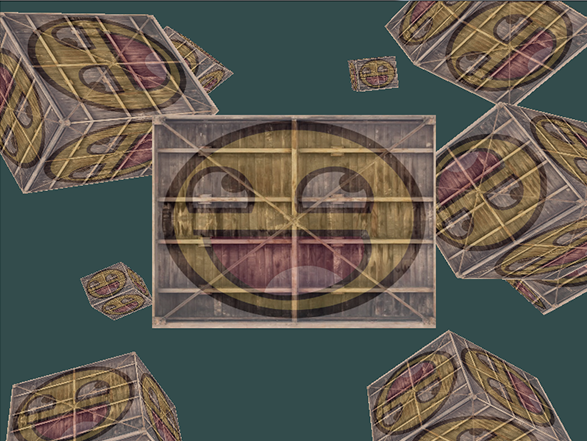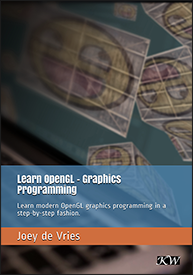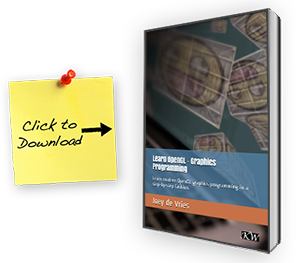Welcome to OpenGL
Welcome to the online book for learning OpenGL! Whether you are trying to learn OpenGL for academic purposes, to pursue a career or simply looking for a hobby, this book will teach you the basics, the intermediate, and all the advanced knowledge using modern (core-profile) OpenGL. The aim of LearnOpenGL is to show you all there is to modern OpenGL in an easy-to-understand fashion with clear examples, while also providing a useful reference for later studies.
So why read these chapters?
Throughout the internet there are thousands of documents, books, and resources on learning OpenGL, however, most of these resources are only focused on OpenGL's immediate mode (commonly referred to as the old OpenGL), are incomplete, lack proper documentation, or are not suited for your learning preferences. Therefore, my aim is to provide a platform that is both complete and easy to understand.

If you enjoy reading content that provides step-by-step instructions, clear examples, and that won't throw you in the deep with millions of details, this book is probably for you. The chapters aim to be understandable for people without any graphics programming experience, but are still interesting to read for the more experienced users. We also discuss practical concepts that, with some added creativity, could turn your ideas into real 3D applications. If all of the previous sounds like someone that could be you, then by all means, please continue.
What will you learn?
The focus of these chapters are on Modern OpenGL. Learning (and using) modern OpenGL requires a strong knowledge of graphics programming and how OpenGL operates under the hood to really get the best of your experience. So we will start by discussing core graphics aspects, how OpenGL actually draws pixels to your screen, and how we can leverage that knowledge to create some funky looking effects.
On top of the core knowledge we will discuss many useful techniques that you can use for your applications, like: traversing a scene, create beautiful lighting, load custom-made objects from a modelling program, do cool post-processing techniques, and much more. We also feature a walkthrough series where we actually create a small game based on our obtained OpenGL knowledge, so you will really get a feel of what it's like to actually do graphics programming.
Where to start
Learn OpenGL is free, and will always be free, for anyone who wants to start with graphics programming. All content is available here at the menu to your left. Simply hit the Introduction button and you're ready to start your journey!
Learn OpenGL - print edition

The content has been thoroughly revised, numerous times, over the course of 7 years to have finally been aggregated into a physical copy available for print. There's been a lot of work put into the physical copy, treating it as the first-class citizen it is. Both the book and website are equals, their content is the same.
As everything is freely available online, getting the physical copy supports me as an author; and let's not forget that certain charm of printed paper. The book is available for sale on Amazon US, Amazon UK, Barnes & Noble, and many other (online) retailers. Note that at some retailers the book is ridiculously overpriced; make sure it matches roughly $60 US dollars, or wait a bit untill the prices balance themselves out.
Learn OpenGL - online print edition - Free PDF

I've revised the source files for the physical print edition and cleaned them up to be available for online reading as well, for those that prefer its content in a singular PDF format. Use this format if you'd like to read during travel, write notes, or print it out yourself. In similar style to the website, this version is, and will always be, freely available.
Note that, similar to the physical copy, links/urls are written out fully or as footnotes, videos show static images, and there's no function hover pop-ups; all to account for the content being mostly offline.
If you want to keep up to date on the site and book's progress and/or other LearnOpenGL news, please follow me on Twitter.




